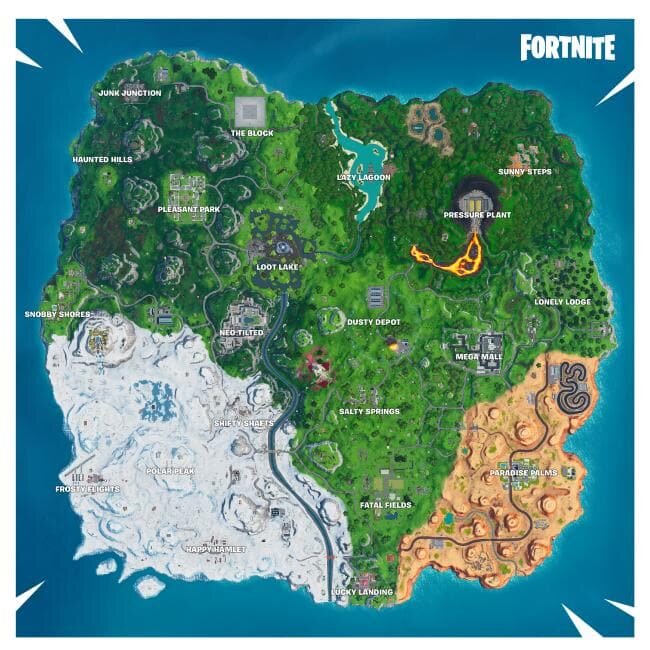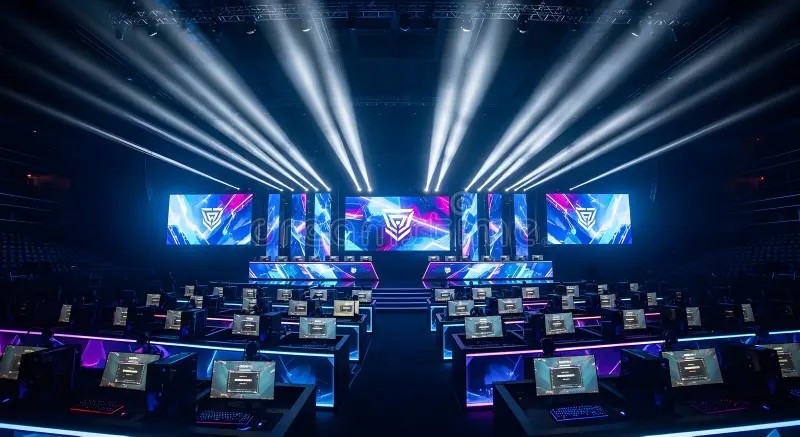In the ever-shifting landscape of the gaming industry, few genres have exploded with the force and cultural impact of the Battle Royale. What began as a niche mod for military simulation games has evolved into a global juggernaut, dominating game streaming platforms, shaping esports news, and generating billions in revenue. From sprawling, realistic battlefields to vibrant, cartoonish arenas, the core concept—a large number of players fighting to be the last one standing in a shrinking play area—has proven to be a powerfully addictive formula. This format has not only defined a generation of video games but has also fundamentally altered expectations for game development, live service models, and community engagement.
This article delves into the anatomy of the Battle Royale genre, deconstructing its core mechanics, exploring the design philosophies that make it so compelling, and analyzing its profound influence on PC gaming, console gaming, and the broader entertainment world. We will examine the technical underpinnings, the strategic depth, and the psychological hooks that keep millions of players dropping into the fray day after day. Whether you’re a seasoned veteran of the genre, a budding game developer, or simply curious about one of the most significant trends in modern gaming history, this comprehensive guide will illuminate the intricate machinery that powers the Battle Royale phenomenon.
The Core Loop: Deconstructing the Battle Royale Formula
At its heart, every Battle Royale game is built upon a simple yet elegant game design loop. This loop consists of four key phases that create a unique narrative in every single match: the Drop, the Loot, the Fight, and the Shrink. Understanding these pillars is essential to grasping the genre’s appeal and its incredible replayability.
The Drop: The Strategic Opening Gambit
Unlike traditional multiplayer modes where players spawn in fixed locations, nearly every Battle Royale match begins with a choice. Players are transported over a vast map—be it by plane, bus, or dropship—and must decide when and where to descend. This initial phase is a masterclass in risk-reward assessment. Do you drop into a high-tier loot area, a so-called “hot drop” teeming with other players, for a chance at the best gear right away? Or do you opt for a quieter, more remote location to gear up safely, at the risk of being under-equipped later? This single decision sets the tone for the entire match. Titles like Apex Legends introduced the “Jumpmaster” system, forcing squads to commit to a location together, adding a layer of team-based strategy from the very first second. This opening phase ensures that no two games ever start the same, a crucial element for long-term engagement.
The Loot: The RNG-Fueled Scramble
Once on the ground, the scramble for resources begins. Players start with nothing and must scavenge for weapons, armor, healing items, and attachments. This looting phase introduces a significant element of Random Number Generation (RNG), which can be both exhilarating and frustrating. Finding a top-tier weapon or a legendary piece of armor can instantly shift the balance of power. This system, drawing inspiration from survival games and RPG Games, creates a constant sense of progression within a single match. Developers carefully balance loot tables and distribution across the map to guide player flow. Recent Fortnite News often highlights changes to the loot pool with each new season, demonstrating how vital this system is to keeping the meta fresh and exciting. The quality of your gaming peripherals, such as a high-DPI gaming mouse for quick inventory management, can make a significant difference in the speed and efficiency of your looting.
The Fight and The Shrink: Forcing Confrontation
The ultimate goal is survival, which inevitably means combat. The combat mechanics themselves often borrow from established genres, primarily FPS Games and third-person shooters. However, the stakes are dramatically higher. With no respawns (or limited respawn mechanics like the Gulag in Call of Duty: Warzone), every encounter is a high-stakes affair. This creates moments of intense tension and adrenaline. To prevent players from simply hiding indefinitely, the genre’s most ingenious mechanic comes into play: the shrinking map. A circular (or otherwise shaped) zone of death constantly closes in on the map, forcing all surviving players into an ever-smaller arena. This mechanic is the engine of a Battle Royale match. It dictates the pace, prevents stalemates, and ensures a climactic final confrontation. The “circle” is a constant threat that forces strategic rotation, map awareness, and difficult decisions about when to fight and when to flee.
The Art of the Arena: World Design and Technical Challenges

The success of a Battle Royale title is intrinsically linked to the quality of its world. The map is more than just a backdrop; it is a character in itself, a sandbox of strategic possibilities that must be meticulously designed to support 100 or more players simultaneously. This presents unique challenges in both game design and game development.
Map Design Philosophy
A great Battle Royale map is a delicate balance of diverse biomes, memorable Points of Interest (POIs), and strategic choke points. POIs serve as magnets for players, concentrating the action in the early game and providing focal points for conflict. The design of these areas—from the verticality of buildings in Fortnite‘s Tilted Towers to the complex, multi-level research facilities in Apex Legends‘ World’s Edge—offers different tactical advantages. Open fields favor long-range engagements, requiring powerful graphics cards and high-refresh-rate gaming monitors for spotting distant enemies, while dense urban areas favor close-quarters combat and strategic use of audio cues picked up by quality gaming headsets. Developers using powerful tools like Unreal Engine or Unity must also consider player flow, ensuring there are viable rotation paths between zones without creating unfair dead ends.
Live Service and Evolving Worlds
To maintain a healthy gaming community and prevent gameplay from becoming stale, developers treat their maps as living entities. The “live service” model is central to the genre’s longevity. Maps are constantly updated through seasonal changes, in-game events, and narrative-driven alterations. The original Fortnite map, for example, has been sucked into a black hole, flooded, and invaded by aliens, with each major event permanently altering the landscape. This approach, often highlighted in PlayStation News and Xbox News, keeps players invested and provides a steady stream of new content to explore. It transforms the game from a static product into an evolving world, a cornerstone of modern AAA games.
The Technical Hurdles
Supporting up to 150 players in a single, seamless session is a monumental technical achievement. The primary challenges lie in netcode and server performance. Every player’s position, actions, and shots must be accurately tracked and synchronized across the server with minimal latency. Poor netcode can lead to frustrating moments where players are shot from behind cover or experience lag, ruining the competitive integrity. Furthermore, rendering a massive, detailed map on a wide range of hardware, from high-end gaming PCs to last-generation consoles and even mobile gaming devices, requires incredible optimization. This is where advancements in gaming tech, from scalable engine features to cloud gaming solutions, play a critical role in making the genre accessible to a massive audience.
Beyond the Last Man Standing: Innovation and Genre Evolution
While the core formula remains potent, the Battle Royale genre is far from static. The most successful titles have innovated and iterated on the base concept, blending it with elements from other genres and creating unique experiences that push the boundaries of what a Battle Royale can be.
Hero Shooters and Ability-Based Combat
Perhaps the most significant evolution came with Apex Legends, which successfully merged the Battle Royale framework with the character-based abilities of hero shooters like Overwatch. This added a strategic layer reminiscent of MOBA games such as League of Legends or Dota 2. Each character’s unique tactical, passive, and ultimate abilities create complex team synergies. A squad’s composition becomes as important as their gun skill, allowing for diverse playstyles and strategies. This innovation proved that the genre had room for more than just pure shooting mechanics, paving the way for more complex competitive gaming experiences.
Redefining Failure: Respawn Mechanics

One of the harshest aspects of the original Battle Royale experience was permanent elimination. An early mistake could mean a quick trip back to the main menu. To mitigate this, developers introduced respawn mechanics. Apex Legends allows teammates to recover a player’s banner and resurrect them at a beacon, while Call of Duty: Warzone famously introduced the Gulag—a 1v1 prison duel where eliminated players can fight for a second chance. These systems reduce frustration, encourage more aggressive play, and keep squads together for longer, enhancing the overall player experience.
Genre-Bending and Casual Adaptations
The “last one standing” concept has proven so flexible that it has been successfully applied to genres far beyond shooters. Tetris 99 on the Nintendo Switch pits 99 players against each other in a frantic puzzle battle. Fall Guys, a massive hit among indie games, is a whimsical platformer Battle Royale where players compete in a series of chaotic obstacle courses. These titles demonstrate the universal appeal of the core competitive loop, proving that the thrill of being the sole survivor can be translated into almost any form of gameplay. This expansion into new areas is a hot topic in game design circles and continues to inspire novel concepts.
The Player’s Arsenal: Strategy, Gear, and Community
Thriving in the high-stakes world of Battle Royale requires more than just luck. It demands a combination of strategic thinking, mechanical skill, and the right equipment. For players looking to climb the leaderboards, understanding these elements is crucial.
Best Practices and Strategic Depth

Success in Battle Royale is often about making better decisions than your opponents. Key strategies include:
- Positional Awareness: Constantly being aware of your surroundings, the position of the shrinking circle, and high-ground advantages is paramount. A good player thinks several steps ahead, planning their rotation to the next safe zone while avoiding dangerous choke points.
- Resource Management: Knowing when to use your healing items, shields, and special abilities can be the difference between winning and losing a fight. Hoarding resources is as bad as wasting them.
- Information Warfare: Sound is a critical source of information. A high-quality gaming headset can help you pinpoint enemy footsteps, gunfire direction, and ability activations, giving you a significant tactical edge. Many esports professionals consider audio just as important as visuals.
The Importance of Gaming Peripherals
While skill is king, your hardware can either be a bottleneck or a force multiplier. For PC gaming enthusiasts, a responsive setup is non-negotiable. A lightweight gaming mouse with a precise sensor allows for accurate aiming. A mechanical gaming keyboard provides faster and more reliable input for movement and actions. For those who prefer game controllers, options with extra paddles, like the Xbox Elite Controller, allow for more complex actions without taking your thumb off the analog sticks. Even a comfortable gaming chair can improve performance by reducing fatigue during long sessions. These components, from gaming laptops to custom-built gaming PCs, are all part of the competitive ecosystem.
The Role of Community and Streaming
The Battle Royale genre’s growth is inextricably linked to the rise of game streaming. Platforms like Twitch became virtual arenas where top players showcased their skills, turning gamers into celebrities and fostering massive communities. Watching streamers provides entertainment, but it’s also a valuable learning tool. Viewers can absorb advanced strategies, learn map layouts, and stay updated on the meta. The community aspect, from discussing Valorant News on forums to sharing clips of an incredible Counter-Strike play, fuels the competitive fire and keeps the genre at the forefront of gaming culture.
Conclusion: The Enduring Legacy of the Battle Royale
The Battle Royale genre has cemented its place in gaming history, evolving from a simple mod into a cultural and economic powerhouse. Its core loop—a masterful blend of strategy, skill, and chance—creates a uniquely compelling experience that generates endless replayability and unforgettable moments. Through constant innovation, from the introduction of hero abilities to genre-bending adaptations, it has proven to be remarkably resilient and adaptable. The genre has not only set new standards for live service games and community engagement but has also pushed the technical boundaries of what’s possible in online multiplayer gaming. As we look to the future, the influence of the Battle Royale will continue to be felt across the entire gaming industry, inspiring new designs and ensuring that the thrill of being the last one standing will captivate players for years to come.











